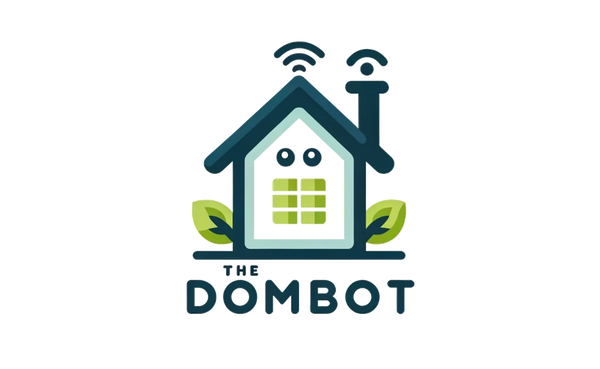Collection: Hygrostat vs. Humidistat: Humidity Control for Comfort & Health
Hygrostat vs. Humidistat: The Humidity Heroes You Didn't Know You Needed
Hey there, smart home enthusiasts! Today, we're diving into the fascinating world of humidity control. You know about thermostats, those trusty temperature guardians, but have you ever heard of a hygrostat? Or its close cousin, the humidistat? Don't worry, you're not alone. These humidity-savvy devices are often overlooked, but they can be game-changers for your home comfort and even your health.
The Humidity Heroes: Hygrostat vs. Humidistat
Let's get this straight: hygrostats and humidistats are like the Batman and Robin of humidity control. They both monitor humidity levels, but they have different missions.
Hygrostat: The All-Around Humidity Champion
Think of the hygrostat as the ultimate humidity detective. It measures both relative humidity (RH) and dew point, giving you a complete picture of the moisture in the air. This makes it ideal for applications where precise humidity control is crucial, like:
- Museums and art galleries: Protecting priceless artifacts from moisture damage.
- Data centers: Maintaining optimal humidity for sensitive electronics.
- Greenhouses: Creating the perfect environment for plant growth.
- Industrial processes: Ensuring consistent humidity for manufacturing.
The hygrostat is like the Swiss Army knife of humidity control. It can be used to turn on dehumidifiers, humidifiers, ventilation systems, and even heating or cooling systems to maintain the desired humidity level.
Humidistat: The Moisture Maestro
The humidistat is more focused on relative humidity (RH). It's like the conductor of your home's humidity orchestra, ensuring the right balance of moisture in the air. This makes it perfect for:
- Residential homes: Maintaining comfortable humidity levels for your family's well-being.
- Commercial buildings: Creating a pleasant indoor environment for employees and customers.
- Hospitals and healthcare facilities: Controlling humidity for infection prevention and patient comfort.
The humidistat typically works with humidifiers or dehumidifiers to adjust the humidity levels in your home or building.
The Hygrostat Symbol: Decoding the Humidity Code
You might be wondering, "How do I even know if I need a hygrostat?" Well, the hygrostat symbol is a dead giveaway. It usually looks like a droplet of water with a wavy line underneath, representing humidity. You'll often find it on control panels, thermostats, or even on the devices themselves.
Here's a fun fact: The hygrostat symbol is often used interchangeably with the humidistat symbol, even though they have slightly different functions. So, if you see that water droplet, it's a good sign that humidity control is involved!
Hygrostat vs. Thermostat: Not Just for Temperature
You might be thinking, "Wait, I already have a thermostat! Why do I need a hygrostat?" Well, thermostats are great for temperature, but they don't care about humidity. Think of it like this: A thermostat is like a chef who only focuses on the temperature of the oven, while a hygrostat is like a sous chef who keeps an eye on the moisture levels in the air.
In some cases, you might find a combined thermostat/hygrostat unit, which is like having both the chef and the sous chef working together to create the perfect environment. These units are becoming increasingly popular as people realize the importance of both temperature and humidity control.
Hygrostat Working Principle: The Science Behind the Scenes
The hygrostat working principle is actually quite simple. It uses a hygrostat sensor, usually a capacitive or resistive sensor, to measure the humidity levels in the air. The sensor sends this information to the hygrostat, which then compares it to the desired humidity setting. If the humidity is too high or too low, the hygrostat activates the appropriate device, like a dehumidifier or humidifier, to adjust the humidity levels.
Hygrostat Function: More Than Just Comfort
Beyond comfort, the hygrostat function can have a significant impact on your health and well-being. Here are a few reasons why you might want to consider adding a hygrostat to your smart home arsenal:
- Improved indoor air quality: Maintaining optimal humidity levels can reduce dust mites, mold, and other allergens, leading to better breathing and fewer allergy symptoms.
- Enhanced sleep quality: The right humidity levels can help you sleep better by regulating your body temperature and reducing nasal congestion.
- Reduced energy consumption: By controlling humidity, you can reduce the need for excessive heating or cooling, saving you money on your energy bills.
- Protection of valuable possessions: As mentioned earlier, hygrostats can help protect your belongings from moisture damage, especially in humid climates.
Hygrostat Price: A Smart Investment
The hygrostat price can vary depending on the features and brand. You can find basic hygrostats for around $20-$50, while more advanced models with smart home integration can cost upwards of $100. However, considering the benefits of improved comfort, health, and energy savings, a hygrostat can be a smart investment for your home.
So, there you have it! The hygrostat and humidistat are the unsung heroes of humidity control. They might not be as flashy as a smart speaker or as popular as a smart thermostat, but they can make a big difference in your home's comfort and well-being. So, if you're looking to take your smart home to the next level, consider adding a hygrostat or humidistat to your arsenal. Your nose (and your health) will thank you!
